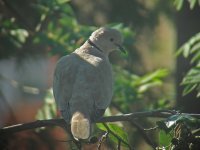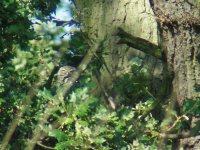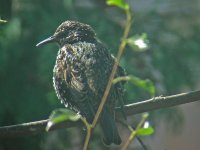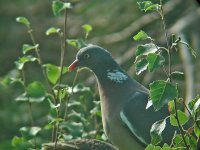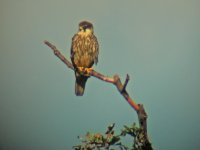-
Welcome to BirdForum, the internet's largest birding community with thousands of members from all over the world. The forums are dedicated to wild birds, birding, binoculars and equipment and all that goes with it.
Please register for an account to take part in the discussions in the forum, post your pictures in the gallery and more.
You are using an out of date browser. It may not display this or other websites correctly.
You should upgrade or use an alternative browser.
You should upgrade or use an alternative browser.
kyocera sl400r settings and sharpness (1 Viewer)
- Thread starter markho
- Start date
More options
Who Replied?Deja-vu said:Hi Markho
Just out of interest what scope are you using?
Mark
Hi
I am using an opticron imagic 65 with a HDF zoom which I keep on 20x . I know its not top of the range but its given me decent views over the years and always looks clear when used just as a scope.
Pie Face
Well-known member
markho said:Hi
I am using an opticron imagic 65 with a HDF zoom which I keep on 20x . I know its not top of the range but its given me decent views over the years and always looks clear when used just as a scope.
Opticron scopes are very good and will give you years of happy birding. However a 65mm non flourite scope will not produce the results the likes of what Marek and Ian get. It will of course give you reasonable results but don't get too dissapointed if your results don't come up to their standards, just make the most of what you have and most importantly enjoy.
Regards
Mark
Deja-vu said:Opticron scopes are very good and will give you years of happy birding. However a 65mm non flourite scope will not produce the results the likes of what Marek and Ian get. It will of course give you reasonable results but don't get too dissapointed if your results don't come up to their standards, just make the most of what you have and most importantly enjoy.
Regards
Mark
Hi
Yes I think you are right, a new scope would be handy.have to drop a few hints at Christmas . I tried a few more practise shots today , some from the garden and some from my local patch. Its definitely easier to get a reasonable picture using every bit of advice I've been given fron the comfort of your living room. Out in the field its a bit more tricky. I took the Hobby from over 200 yds using the zoom lens at 45x. Sods law they wouldn't let me get any closer now I know more. The little Owl was 20x at about 100yds.
Attachments
IanF
Moderator
I'd be happy with any of those shots. All the detail is there on the Hobby and the exposure is spot on - it's just the distance and haze that's making it a little soft looking, same with the Owl.
Plenty of practice in the garden makes it second nature when you go out in the field. On the Wood Pigeon and Collared Dove shots especially, they show just how narrow the depth of field is. Fine focusing of the scope with the shutter half depressed may have brought the critical focus point to the head/eye rather than just in front. It's on the leaves to the right on the Wood Pigeon and the tip of the tail on the Collared Dove. It's static birds like these that really benefit from using a higher aperture to give more depth of field as shutter speed is less important.
Plenty of practice in the garden makes it second nature when you go out in the field. On the Wood Pigeon and Collared Dove shots especially, they show just how narrow the depth of field is. Fine focusing of the scope with the shutter half depressed may have brought the critical focus point to the head/eye rather than just in front. It's on the leaves to the right on the Wood Pigeon and the tip of the tail on the Collared Dove. It's static birds like these that really benefit from using a higher aperture to give more depth of field as shutter speed is less important.
IanF said:I'd be happy with any of those shots. All the detail is there on the Hobby and the exposure is spot on - it's just the distance and haze that's making it a little soft looking, same with the Owl.
Plenty of practice in the garden makes it second nature when you go out in the field. On the Wood Pigeon and Collared Dove shots especially, they show just how narrow the depth of field is. Fine focusing of the scope with the shutter half depressed may have brought the critical focus point to the head/eye rather than just in front. It's on the leaves to the right on the Wood Pigeon and the tip of the tail on the Collared Dove. It's static birds like these that really benefit from using a higher aperture to give more depth of field as shutter speed is less important.
Ok thanks for the tip.
Now let me get this right. A higher F number will give me a greater depth of field but will have a slower shutter speed. And a lower number the opposite. My camera only seems to have two numbers F2.8 and F7.5. and the manual doesn't really give any indications as to why you should change from either setting. So in future the 7.5 setting would be the best to use if the sunject is not moving around to much ?
IanF
Moderator
I know it is confusing about apertures.
A high f-number like f8, f11, f16 means a small aperture and greater depth of field - but due to the smallness it means less light enters the camera. I usually aim for at least 1/60 shutter speed but preferably 1/125 but it's rarely anything more than that.
Low f-number such as f2,8 or f4 means a wider aperture so more light enters the camera so a higher shutter speed but with a narrower depth of field.
With your camera on a bright day with the sun somewhere behind you or off either shoulder I'd always use the f7,5 setting. If it turns dull then you have the option of swapping to f2,8.
One other tip I realised I had forgotten to mention when I was out today, is that when using the cable release having set up the shot how you want it - wait 5-10 secs before you finally release the shutter - that way any vibration from having touched the scope is certain to have settled down. Of course it needs to be an obliging subject but it's useful as you can wait for the bird to turn it's head in the right direction.
A high f-number like f8, f11, f16 means a small aperture and greater depth of field - but due to the smallness it means less light enters the camera. I usually aim for at least 1/60 shutter speed but preferably 1/125 but it's rarely anything more than that.
Low f-number such as f2,8 or f4 means a wider aperture so more light enters the camera so a higher shutter speed but with a narrower depth of field.
With your camera on a bright day with the sun somewhere behind you or off either shoulder I'd always use the f7,5 setting. If it turns dull then you have the option of swapping to f2,8.
One other tip I realised I had forgotten to mention when I was out today, is that when using the cable release having set up the shot how you want it - wait 5-10 secs before you finally release the shutter - that way any vibration from having touched the scope is certain to have settled down. Of course it needs to be an obliging subject but it's useful as you can wait for the bird to turn it's head in the right direction.
Rob Smallwood
Well-known member
Ian,
I've just taken delivery of my SL400R (I had to get mine from the States) but as a camera "newbie" I'm following this with interest.
What I can't find from the instructions is HOW to change from f7,5 to f2,8 (or for that matter "spot meterig" and "spot focussing" ?!
This is probably because I am using the "simple" manual - I'm not yet ready to download the full instructions - but a quick guide would help?
I've just taken delivery of my SL400R (I had to get mine from the States) but as a camera "newbie" I'm following this with interest.
What I can't find from the instructions is HOW to change from f7,5 to f2,8 (or for that matter "spot meterig" and "spot focussing" ?!
This is probably because I am using the "simple" manual - I'm not yet ready to download the full instructions - but a quick guide would help?
Rob Smallwood said:Ian,
I've just taken delivery of my SL400R (I had to get mine from the States) but as a camera "newbie" I'm following this with interest.
What I can't find from the instructions is HOW to change from f7,5 to f2,8 (or for that matter "spot meterig" and "spot focussing" ?!
This is probably because I am using the "simple" manual - I'm not yet ready to download the full instructions - but a quick guide would help?
Hi Rob
I think I can help
Select the camera icon from the top display as if you are taking a picture. Then press the menu button which will bring up a display on the main LCD screen.Scroll along this until you reach the picture with camera icon. Select this with the centre button and another screen will be displayed on the LCD. Scroll down this and select AF MODE . You will see either F2.8 or F7.5 already selected. Just change to the one you want.l
Rob Smallwood
Well-known member
It works!
All I need now is an adaptor for my Leica 77 APO and watch out Paul Hackett - here I come! (Actually I'd settle for a record shot of anything I see!).
All I need now is an adaptor for my Leica 77 APO and watch out Paul Hackett - here I come! (Actually I'd settle for a record shot of anything I see!).
IanF
Moderator
Hi Rob,
Unfortunately it's the Contax version I have, the SL300RT - so I don;t know if it operates the same way. Possibly it does as there are the two choices of f2,8 and f7,5.
In picture taking mode you select the menu button, scroll right to the Manual settings and hit the centre of the toggle button and scroll down to AE Mode and then right to select either f2,8 or f7,5.
Unfortunately it's the Contax version I have, the SL300RT - so I don;t know if it operates the same way. Possibly it does as there are the two choices of f2,8 and f7,5.
In picture taking mode you select the menu button, scroll right to the Manual settings and hit the centre of the toggle button and scroll down to AE Mode and then right to select either f2,8 or f7,5.
marek_walford
Well-known member
I see what Ian's saying about aperture and it makes sense. However, unfortunately the SL400R doesn't display the shutter speed so you have no idea what shutter speed the camera has chosen. It might be worth taking your shot at a low aperture to get a fast shutter speed to all but guarantee a record shot and then up the aperture if the conditions are favourable.
One other tip if you don't have a shutter release cable is to use the timer; in continuous shotting mode this will take 3 pics at 1 second intervals.
One other tip if you don't have a shutter release cable is to use the timer; in continuous shotting mode this will take 3 pics at 1 second intervals.
Rob Smallwood said:It works!
All I need now is an adaptor for my Leica 77 APO and watch out Paul Hackett - here I come! (Actually I'd settle for a record shot of anything I see!).
I also use a Kyocera sl400r with a Leica scope and have found something quite useful... the Opticron cradle mount is just the right size to fit snuggly in the Leica eyepeice. This makes it very easy to quickly line the camera up and take a shot hand held, it also blocks out all light and help to hold the camera steady.
The cradle mount also has a 28mm thread so can be used to attach to a digiscoping adaptor. It's a handy add on and for more solid than a attaching the camera using the small plastic 28mm threaded 'lens hood' that came with the camera.
Rob Smallwood
Well-known member
Any idea of the cost?
Pie Face
Well-known member
Rob Smallwood said:Any idea of the cost?
Hi Rob
According to Opticron's website it's £50.
Mark
Rob Smallwood
Well-known member
Thanks.
If I'm reading this and the Opticron site properly you are saying that with the cradle mount (at about £50), the camera mount will fit inside the eyepiece whilst extended giving a quick setup option, whilst for better results I'll need the £50 "cradle" plus the proper adaptor(which presumably costs more?).
Sorry if I'm being slow on the uptake here!
If I'm reading this and the Opticron site properly you are saying that with the cradle mount (at about £50), the camera mount will fit inside the eyepiece whilst extended giving a quick setup option, whilst for better results I'll need the £50 "cradle" plus the proper adaptor(which presumably costs more?).
Sorry if I'm being slow on the uptake here!
Pie Face
Well-known member
Rob Smallwood said:Thanks.
If I'm reading this and the Opticron site properly you are saying that with the cradle mount (at about £50), the camera mount will fit inside the eyepiece whilst extended giving a quick setup option, whilst for better results I'll need the £50 "cradle" plus the proper adaptor(which presumably costs more?).
Sorry if I'm being slow on the uptake here!
Correct.
Rob Smallwood said:Thanks.
If I'm reading this and the Opticron site properly you are saying that with the cradle mount (at about £50), the camera mount will fit inside the eyepiece whilst extended giving a quick setup option, whilst for better results I'll need the £50 "cradle" plus the proper adaptor(which presumably costs more?).
Sorry if I'm being slow on the uptake here!
Exactly.
The cradle mount is £50 with the adaptor being an extra cost (depending on which one you get). I have never used an adaptor (with either the Kyocera or the Coolpix I had before) and have always digiscoped handheld. I only got the cradle mount a week or so ago, but have found that it does make taking quick record shots very easy. When used with an adaptor the cradle mount does give a nice solid connection.
I haven't got an adaptor for my Leica scope yet, so I'll be interested to hear which one you go for and how you get one with it.
Pie Face
Well-known member
I can't recommend the srb film (www.srbfilm.co.uk) digiscoping sleeve enough I've been using it for two years now, first with the 995 and now the Kyocera. In my opinion it is the best fit and build of them all and only cost me £35. I fit it to my Leica zoom but they will make them to fit on the end of any scope.
Mark
Mark
Users who are viewing this thread
Total: 2 (members: 0, guests: 2)




